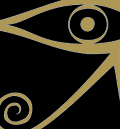The eLitMed.hu medical portal uses computer cookies for convenient operation. Detailed information can be found in the Cookie-policy.
Lege Artis Medicinae - 2006;16(01 klsz)
Content
[THE GENERAL PRACTITIONER’S ROLE IN THE MANAGEMENT OF ACUTE CORONARY SYNDROME]
[The recovery chances of patients with acute coronary syndrome are substantially affected by the time elapsed before the exact diagnosis is set up, by the standards of professional attendance on the spot, and by the speed of transportation to the most adequate medical institution that can offer the patient optimal definitive treatment. Thus, the responsibility of the physician who first sees the patient, often the general practitioner, is extremely high. In case of typical chest pain a 12-lead ECG should be made on the spot. If acute myocardial infarction is suspected, acetylsalicylic acid, short-acting sublingual nitrate, morphine, beta receptor blocker (if not contraindicated), and oxygen should be administered until the emergency ambulance arrives.]
[AMBULANCE CARE OF ACUTE CORONARY SYNDROME]
[In Hungary, the advanced life support and mobile intensive care units of the National Ambulance Service are responsible for the effective praehospital care of patients with acute coronary syndrome. At the onset of chest pain, patients are supposed to call the ambulance service without delay. The dispatcher is to direct the most adequate unit to each patient. On-site treatment and optimization of medical care pathways are supported by existing algorithms. For early onset ST-elevation myocardial infarcts, praehospital fibrinolysis can provide the most benefit. Emergency secondary transports may lead to significant delays; therefore, this pathway should be limited to carefully selected cases.]
[THE MANAGEMENT OF ACUTE CORONARY SYNDROME IN CORONARY CARE UNITS WITH NO FACILITY FOR PERCUTANEOUS INTERVENTION]
[The role of coronary care units with no facility for percutaneous intervention in the treatment of acute coronary syndrome has been greatly changed since pharmacological reperfusion approaches have been replaced by mechanical techniques, also with a wider indication. The planning of the traditional emergency treatment of patients admitted to such intensive care units depends on the necessity and possibility of primary percutaneous coronary intervention. Considering today’s professional requirements, all coronary care units, places of high patient turnover and employing highly qualified personnel, should be supplemented with facility for percutaneous coronary intervention.]
[PERCUTANEOUS CORONARY INTERVENTION IN ACUTE CORONARY SYNDROME]
[Recently the indications of percutaneous coronary intervention have changed both in the ST elevation and in the non-ST elevation, unstable angina group of acute coronary syndrome. Current indications in these groups are briefly reviewed and the outcomes and indications of primary interventions or those following successful or unsuccessful thrombolysis are discussed based on the most recent guidelines. Of the technical aspects, experience of the person performing the intervention, the issue of stent implantation or balloon expansion, and protection against embolism are mentioned.]
[ANTITHROMBOTIC MEDICAL TREATMENT IN ACUTE CORONARY SYNDROME]
[Treatment of acute coronary syndrome has extensively changed during the last two to three decades. Improvement of medical care resulted in a strikingly lower hospital mortality, at least for acute coronary syndrome with ST-segment elevation. Currently, invasive revascularisation procedures have stepped into the limelight of medical activities. The success of this instrumental intervention has been due the development of aggressive adjuvant antithrombotic therapy. In our country, management of patients with acute coronary syndrome has also changed fundamentally, restructuring care system. This has at the same time resulted in better adherence to professional guidelines.]
[ARRHYTHMIAS IN ACUTE MYOCARDIAL INFARCTION]
[Arrhythmias ranging from a premature beat to sustained tachycardias are common in acute myocardial infarction. This paper discusses the diagnosis, prognosis and treatment of the most frequent and important arrhythmias that may accompany myocardial infarction.]
[LIPID LOWERING IN ACUTE CORONARY SYNDROME]
[A large number of studies have proved that in acute coronary syndrome the administration of statins improves clinical outcome by their lipid lowering effect, and also by stabilizing the plaque as part of their pleiotropic effects. An important question regarding statin therapy is when it should be introduced after the onset of symptoms. Studies on this issue agree that statin therapy should be initiated right after the onset of acute symptoms. If the patient is already receiving statin, we must make sure it is not abandoned. According to current Hungarian guidelines, for patients with acute coronary syndrome the target level of the low density lipoprotein cholesterol is 1.8 mmol/l.]
[LOWERING BLOOD PRESSURE IN ACUTE CORONARY SYNDROME]
[Early monitoring and management of patients with acute coronary syndrome takes place in coronary units. Hypertension is one of the main risk factors of the syndrome. Many patients have high blood pressure in the acute situation, and it may be further increased by the acute stress effect. To ensure controllability of blood pressure, intravenously administered nitroglycerine, beta receptor blockers, angiotensin-converting enzyme inhibitors, and centrally acting drugs are the medications of choice in the management of acute coronary syndrome.]
[REHABILITATION AFTER ACUTE CORONARY SYNDROME]
[Changes that have occurred in the treatment of acute coronary syndrome have also had an impact on rehabilitation. Unfortunately, current international and national professional guidelines barely take this into account. At present, most patients after acute coronary intervention are certainly not directed to take part in rehabilitation programmes. Thus those very patients miss these programmes who would gain the most benefit from a multi-disciplinary approach to rehabilitation. It would be necessary to develop standard guidelines for the selection of patients. The outcome of the interventions is highly affected by the patients' personality and psychosocial status. It has become obvious that in addition to physical exercise, which is useful but not a cure-all, psychosocial intervention is a key component of successful rehabilitation. This, however, is possible only by increasing the number of rehabilitation professionals and also by the fundamental improvement of financing.]
1.
Clinical Neuroscience
[Headache registry in Szeged: Experiences regarding to migraine patients]2.
Clinical Neuroscience
[The new target population of stroke awareness campaign: Kindergarten students ]3.
Clinical Neuroscience
Is there any difference in mortality rates of atrial fibrillation detected before or after ischemic stroke?4.
Clinical Neuroscience
Factors influencing the level of stigma in Parkinson’s disease in western Turkey5.
Clinical Neuroscience
[The effects of demographic and clinical factors on the severity of poststroke aphasia]1.
2.
3.
4.
5.











